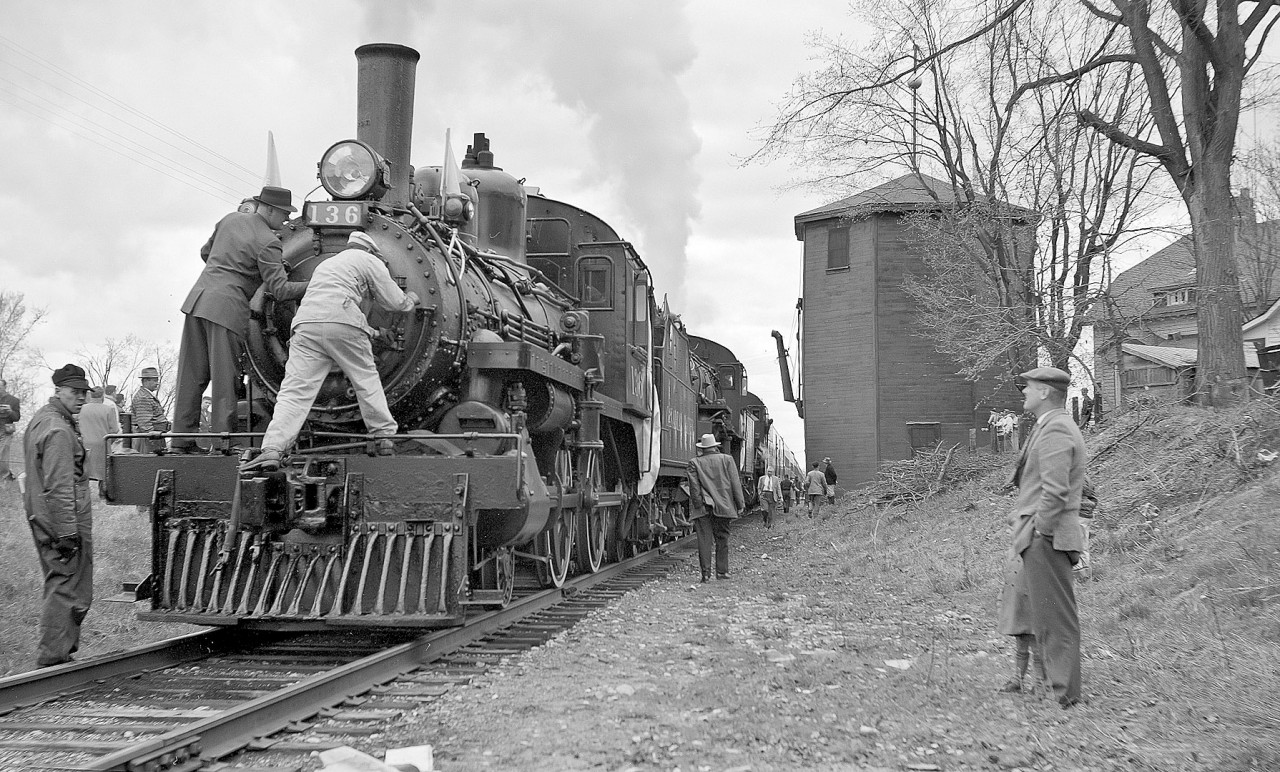|
Caption: Men set about cleaning out the clogged smoke box netting. Shovels full of cinders were removed. So severe was this that the bottom of the smoke box door has a noticeable burn attesting to the high heat build-up. Cinders plugging the frontend was said to be common characteristic of small engines such as A class 4-4-0’s and D-4 class 4-6-0’s and could be affected by too heavy a hand on the throttle of a small engine.
Engineer Charlie Waters looking back towards the camera. Unbolting the smoke box door are: in suit, Nels Perkins, General Locomotive Foreman, Lambton Locomotive Department and in overalls Peter Fairfull fireman on 136.
I worked for Mr.Perkins and he was fine man unlike many other officials. You didn’t get away with anything. He was the boss and everybody knew it. He just didn’t have to be a SOB. He explained why he had this laid back manner. When he started his father was a locomotive foreman on the Algoma Division and his men all hated him. He made up his mind that when he got to be a locomotive foreman he would treat his men differently.
Peter Fairfull was a real gentleman, pleasant and easy going. He came to ourf home to ask my permission to fire 136 that trip. I agreed and the North Pool ireman who stood for the run traded off. Many men wanted this run but only 6 were needed and some would not trade off.
Peter went on to “fame” as regular engineer on the Day Transfer with 8921. I believe it was he who nicknamed that diesel Empress of Agincourt. He retired off the Havelock Budd Car.
|



Thank you!
We see here the only tool you really need to fix anything. A hammer. Give it a good smack, and away we go.
Joe Durocher’s comment reminded me of a story. I was braking for an old CP Conductor out of London & he told me a story one day. On the CP Windsor Sub, there was a curve where CP crossed CN at “Komoka Diamond”. heading west the curve was on the left side. My old Conductor was a brakeman at the time this story took place & I guess his Con was a bit “dopey” to quote him. The train went in emergency as the brakeman was inspecting it on the curve. The cause was a few cars about 20 ahead that had derailed & gone sideways. The brakeman could see the mess but the Conductor on the other side could not acct the curve. The brakeman said “Oh, Oh, I see the problem.” The old dopey Conductor said “we better head up to fix it, should we bring the hammer?”